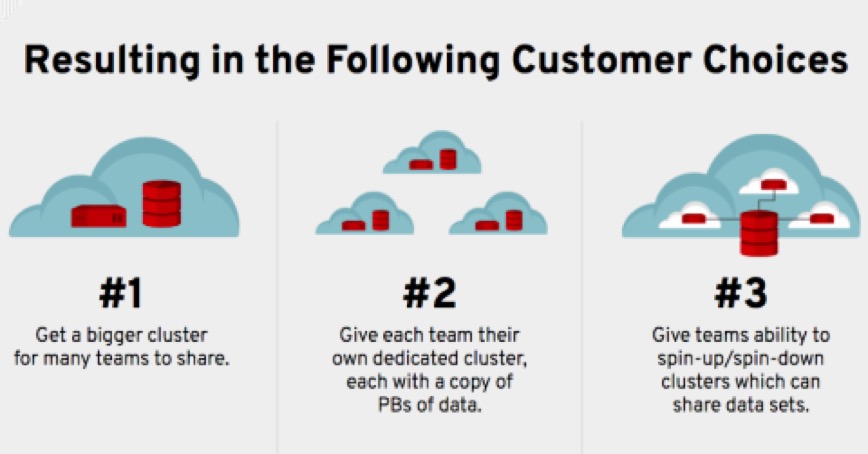Why Spark on Ceph?
To augment and/or replace HDFS
This is a Press Release edited by StorageNewsletter.com on July 3, 2018 at 2:38 pm This blog was posted on June 25, 2018 by Brent Compton, director storage solution architectures, Red Hat, Inc.
This blog was posted on June 25, 2018 by Brent Compton, director storage solution architectures, Red Hat, Inc.
Why Spark on Ceph? (Part 1 of 3)
A couple years ago, a few big companies began to run Spark and Hadoop analytics clusters using shared Ceph object storage to augment and/or replace HDFS.
We set out to find out why they were doing it and how it performs.
Specifically, we wanted to know first-hand answers to the following three questions:
1 Why would companies do this?
2 Will mainstream analytics jobs run directly against a Ceph object store?
3 How much slower will it run than natively on HDFS?
We’ll provide summary-level answers to these questions in a 3-part blog series. In addition, for those wanting more depth, we’ll cross-link to a separate reference architecture blog series providing detailed descriptions, test data, and configuration scenarios.
Part 1: Why would companies do this?
Agility of many, the power of one
The agility of many analytics clusters, with the power of one shared data store. (Ok … enough with the simplistic couplets.)
Here are a few common problems that emerged from speaking with 30+ companies:
• Teams that share the same analytics cluster are frequently frustrated because someone else’s job often prevents their job from finishing on-time.
• In addition, some teams want the stability of older analytic tool versions on their clusters, while their peer teams need to load the latest-and-greatest tool releases.
• As a result, many teams demand their own separate analytics cluster so their jobs aren’t competing for resources with other teams, and so they can tailor their cluster to their own needs.
• However, each separate analytics cluster typically has its own, non-shared HDFS data store – creating data silos.
• And to provide access to the same data sets across the silos, the data platform team frequently copies datasets between the HDFS silos, trying to keep them consistent and up-to-date.
• As a result, companies end up maintaining many separate, fixed analytics clusters (50+ in one case), each with their own HDFS data silo containing redundant copies of petabytes of data, while maintaining an error-prone maze of scripts to keep data sets updated across silos.
• But, the resulting cost of maintaining 5, 10, or 20 copies of multi-petabyte datasets on the various HDFS silos is cost prohibitive to many companies (both CapEx and OpEx).
In pictures, their core problems and resulting options look something like this:
Figure 1. Core problems

Figure 2. Resulting Options

Turns out that the AWS ecosystem built a solution for choice #3 (see Figure 2 above) years ago through the Hadoop S3A filesystem client. In AWS, you can spin-up many analytics clusters on EC2 instances, and share data sets between them on Amazon S3 (e.g. see Cloudera CDH support for Amazon S3). No more lengthy delays hydrating HDFS storage after spinning-up new clusters, or de-staging HDFS data upon cluster termination. With the Hadoop S3A filesystem client, Spark/Hadoop jobs and queries can run directly against data held within a shared S3 data store.
Bottom-line … more-and-more data scientists and analysts are accustomed to spinning-up analytic clusters quickly on AWS with access to shared data sets, without time-consuming HDFS data-hydration and de-stage cyles, and expect the same capability on-premises.
Ceph is an open-source, private-cloud object storage platform, providing S3-compatible object storage. It was (and is) the choice for these companies looking to provide an S3-compatible shared data lake experience to their analysts on-premises.
Next blog in the series: Why Spark on Ceph? (Part 2 of 3): Will mainstream analytics jobs run directly against a Ceph object store?













 Subscribe to our free daily newsletter
Subscribe to our free daily newsletter

